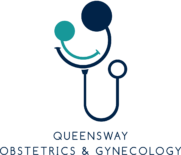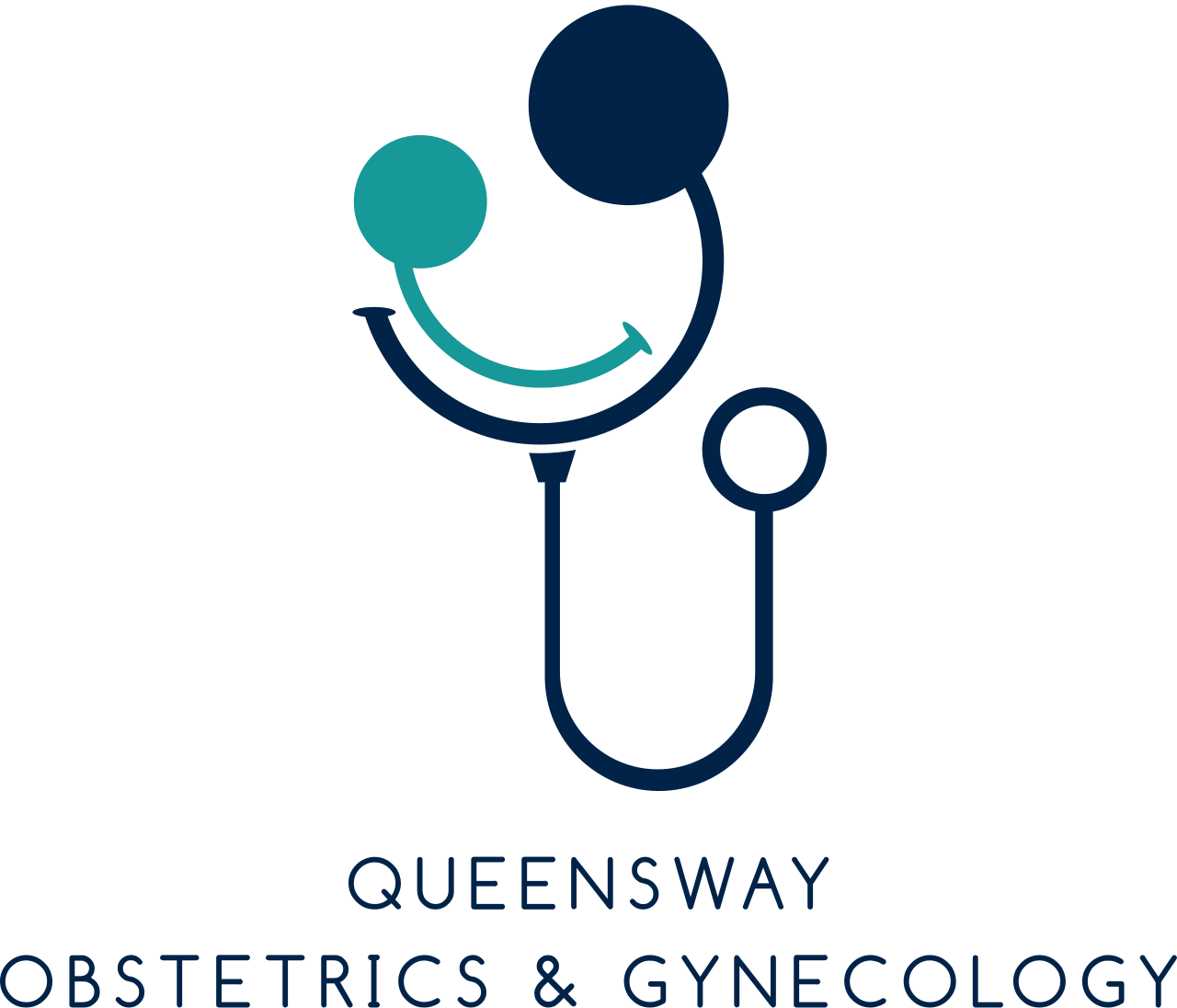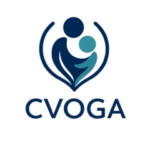- Pregnancy Guide
- Acetaminophen Use in Pregnancy
- Cervical Check
- Common Discomforts of Pregnancy
- Cough and Cold in Pregnancy
- Constipation in Pregnancy
- Exercise in Pregnancy
- GBS Testing
- Gestational Diabetes
- Iron Deficiency During Pregnancy
- Nutrition In Pregnancy
- Pain in Pregnancy
- Pelvic Floor Physiotherapy
- RSV Immunization
- Pregnancy Guide
Cant find something?
Your Week by Week Pregnancy Guide
As you move through your pregnancy, use this page to review steps you can take to prepare for what’s ahead and ensure a healthy pregnancy for both you and your baby.
Please note, this list is specifically tailored for patients of Queensway Obstetrics and Gynecology and Credit Valley Obstetrical Associates (CVOGA).
Review the following important information about office and hospital procedures:
Hospital
Where will I deliver?
If you are a patient of Queensway Obstetrics and Gynecology, you will be delivering at Trillium – Mississauga Hospital. Ensure you know the address of the hospital (100 Queensway W, Mississauga, ON L5B 1B8), and how to get here in the case of an emergency.
- In case of urgent issues, please go to Mississauga Hospital. Please do not call or come to the office. Please do not go to another hospital unless there is an absolute emergency.
- If you are under 20 weeks: go to the Emergency Room
- If you are over 20 weeks: Labour Assessment Unit (3rd Floor – D Elevators)
- Examples of urgent issues include baby not moving (<6 movements in 2 hours), bleeding, labour, water breaking, or severe pain
Who will be at my delivery?
Hospital/On Call: The doctor on call is the doctor who will be assessing you in the Labour Assessment Unit or delivering the baby. There is a team of 10 Obstetricians (females and males).
There is also a large team of Pediatricians, Anesthesiologist, Respiratory Therapists, and Nurses who may also be at your delivery (females and males).
Mississauga is a teaching hospital affiliated with the University of Toronto. Medical students and resident doctors are important members of our team.
Office
Office Procedures
Please arrive on time for your appointments. If you are late, your appointment will be rescheduled.
Please bring your OHIP card to every appointment and notify us of any changes to your address, phone, etc.
Routine tests:
Blood Work/Laboratory: When you are given a requisition, visit a Life Labs or Dynacare.
Ultrasounds: When you are given a requisition visit an Ontario Diagnostic Center or True North Imaging.
Please do not come to the clinic if you are sick. Call or email to reschedule your appointment.
Please do not leave voicemails regarding health related issues. These messages will be deleted and not answered to protect your privacy.
In case of urgent issues, please go to Mississauga Hospital. Please do not call or come to the office.
After Your First Visit
- Before leaving the office, please make sure you understand the plan for your next appointment and schedule one if needed. It is your responsibility to book your appointments.
- Review your Trillium Hospital Welcome Booklet.
- Complete your hospital registration form and give it to your secretary at the next appointment.
- Review general pregnancy checklist below.
General Pregnancy Checklist
Sign Up for Prenatal Classes:
Supplements
- Take Vitamin D3 2000 units every day along with your prenatal vitamin.
- Both Vitamin D and prenatal vitamins are available for purchase over the counter.
- Read about iron deficiency in pregnancy and how to prevent anemia
Exercise in Pregnancy
- See our Exercise in Pregnancy page for more information
- Get started with one of the videos below!
- Stretching and Mobility
- Prenatal Pilates for pelvic floor strength
- Pelvic Floor Exercises
- Prenatal Yoga
Review Trusted Online Sources for Pregnancy Information
Weeks 11-14
Genetic Testing
- Decide whether you would like to complete prenatal genetic testing. Read this Prenatal Genetic Screening Pamphlet (pamphlets available in 15 languages):
Options for genetic testing include:
- Enhanced First Trimester Screening (eFTS):
- OHIP covered from 11+2 – 13+3 weeks. This involves an ultrasound that includes NT measurement and bloodwork done on the same day.
- Second Trimester Screening:
- Also paid for by OHIP, STS is an option if eFTS is not available. STS is done by a blood test from 14-20+6 days of pregnancy. Like eFTS, it finds most pregnancies with trisomy 18 and 21, but not all.
- Non-invasive prenatal testing (NIPT):
- This is a paid test unless there is an abnormality found on the eFTS or STS test mentioned above
- Also a blood test, NIPT can be done any time after 9 or 10 weeks of pregnancy. It can find more pregnancies with trisomy 18 and 21 than the above screens. NIPT also screens for another genetic condition called trisomy 13.
- NIPT is OHIP-funded if:
- You will be age 40 or older at the time of birth.
- You had a past pregnancy with trisomy 18, 21, or 13.
- You are pregnant with twins.
- If you do not meet the criteria but still want NIPT, you can pay for it yourself. Your health-care practitioner will still need to organize it for you. If you choose NIPT, you don’t need enhanced first or second trimester screening, but it’s still recommended you have a 11-14 week ultrasound (without the blood test) for more information about the health of the baby
- Enhanced First Trimester Screening (eFTS):
Do You Need Aspirin?
- Aspirin early in pregnancy helps to optimize placental developement, can decrease the risk of pre-eclampsia and preterm birth by as much as 30%. Ideally Aspirin is initiated at 12 weeks gestation.
- Please ask your OB if you meet the criteria for starting ASA:
- History of pre-eclampsia
- Twin Pregnancy
- Chronic Hypertension (diagnosed before pregnancy)
- Type 1 or 2 diabetes
- Renal Disease
- IVF Pregnancy
- Autoimmune Diseases (e.g. Lupus)
Weeks 18-20
Schedule an Anatomy ultrasound.
- Follow-up scans are common and completely normal, as certain views of the baby may not be clear due to their position. You may need to return for additional imaging to get a more complete picture.
Diet and Exercise
Weeks 24-28
Glucose Challenge Test:
- Complete a standard 1 hour screening test. NO fasting is required. During the test, you will drink a sugary drink, and an hour later, a blood sample will be taken to measure your blood sugar levels.
- If the results are higher than normal, a follow-up test will be needed to confirm if gestational diabetes is present.
- The follow up test (called the glucose tolerance test or GTT) is 2 hours long and DOES require fasting for 8-12 hours before the test
- If the test result is above normal values, it confirms the diagnosis of gestational diabetes.
Prenatal Classes
- Reminder to sign up for prenatal classes if you haven’t already!
Weeks 26-32
Kick Counts
- Starting at 26-32 weeks, baby should be active every day. If you think your baby might be moving less than usual, do your kick count activity.
- During the kick count activity, if you don’t feel 6 movements (such as kicks, flutters, or rolling movements) within 2 hours, you should proceed to the Labour Assessment Unit.
- For more information, visit: https://www.pregnancyinfo.ca/your-pregnancy/healthy-pregnancy/kick-counts/
Immunization
There are 3 important immunizations that you should be aware of:
- TDAP Vaccine
- Flu shot
- Get a flu shot (when available between October – February)
- RSV immunization
- Click here to go our webpage on RSV Immunization
- Click here to go to the THP website on RSV
- Fact Sheets from PCMCH: (English | French | Simplified Chinese (简体中文) | Traditional Chinese (繁體中文) | Arabic (عربى) | Italian (Italiano) | Punjabi (ਪੰਜਾਬੀ) | Spanish (Español)
Weeks 32-35
Post Delivery Follow Up for Baby
- Your baby will need to see your family doctor or pediatrician within 2-3 days after discharge.
- Please confirm if your family doctor is accepting newborns in their practice or if you will need to find a pediatrician.
Perineal Massage
- Starting at 34 weeks, take 5 minutes to massage your perineum, 3-4 times a week (unless you have a booked cesarean section).
- Perineal massage has been shows to prevent tearing and decrease pain after childbirth. For more information, click here.
Perineal Care
Do not shave your bikini with a razor after 36 weeks. You may use a trimmer. For more information, click here.
Weeks 35-37
Antenatal Hand Expression
- Review More Milk Sooner PDF, which reviews hand expression in pregnancy to collect colostrum (starting at 36 weeks). Hand expression can assist you to have an easier time starting and continuing breastfeeding.
- You can start hand expressing if you do not have any risks (see list in PDF linked above).
- For more information, including videos on hand expression click here.
Pack Your Hospital Bag
- For the full list click here.
Group B Streptococcus Screening
- You will need to complete a swab that tests for Group B Streptococcus. You will complete the swab at home on the day of your appointment and bring it the office. Click here to learn more.
- See the video below for instructions.
Weeks 38-40
When to Go to the Hospital
- Review the signs of labour
- Reasons to go to the hospital include:
- Contractions (follow the 5-1-1 rule: contractions occur every 5 minutes, last 1 minute each, and have been ongoing for at least 1 hour)
- Leaking of fluid (can be a small trickle or large gush)
- Decreased fetal movements (less than 6 movements in an hour. See ‘Kick Counts’ section above)
- Bleeding more than 1 pad in an hour (a small amount of bleeding can be normal as the cervix changes)
Preparing for a Cervical Check
- Click here to learn more about cervical checks and membrane sweeps
Induction of Labour
- You may need an induction of labour for medical reasons e.g. gestational diabetes, high blood pressure, or if you go past your due date.
- Please review the following information on induction of labour:
Things to Consider
- Children are NOT permitted in the Labour and Delivery area at the hospital. If you have young children at home, you will need to make arrangements for your children during your delivery.
Delivery
Preparing for Delivery
Read about Preparing for your Delivery on the Trillium Health Partners website
Modes of Delivery
- To read about the different modes of delivery, click on the links below:
Pain Control in Labour
- There are many options for pain control in labour. Click on the links below to learn more.
Delayed Cord Clamping
For babies born at term (>37 weeks): delayed cord clamping recommended for 60 seconds. However, for term newborns, delayed cord clamping past 60 seconds is not recommended as it increases the risk of jaundice requiring phototherapy.
For babies born < 37 weeks: delayed cord clamping is recommended for 60-120 seconds because it decreases newborn mortality and morbidity and improves outcomes after the baby is born.
For more information, click the links below:
- Canadian Pediatric Society: Umbilical cord management in preterm and term infants
- American College of Obstetricians and Gynecologists: Delayed Umbilical Cord Clamping After Birth
Postpartum
Immediate Postpartum Support (up to 8 weeks after birth)
THP Perinatal Community Care Program (PCCP):
- Purpose: Bridges the gap in postpartum care for marginalized and vulnerable populations, as well as those without access to a primary health care provider in the community
- Duration: Services available for up to 8 weeks after birth.
- Target Audience:
- Newcomers to Canada
- Individuals without a family doctor
- Families facing social or health challenges
- Led By: Experienced midwives at Trillium Health Partners (THP)
Services :
- Postpartum clinical care for those without a primary care provider
- Newborn weight checks
- Infant feeding support
- Non-urgent jaundice follow-up
- Mental health support
- Contraception counseling
- Telephone support
- Assistance with community resources and navigation
- Pregnancy consultations for postpartum planning
- Group education sessions
Click here to learn more.
Postpartum Contraception
- Review options for post-partum contraception. Click here for more information.
Further Support
- Find an EarlyON child and family centre near you
- EarlyON Child and Family Centres offer free, high-quality programs for families and children from birth to 6 years old. You can learn and play with your child, meet people and get advice from early childhood professionals.
Cant find something?




